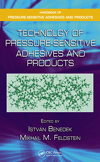EDITOR'S MEMO: Check It Out

This month's issue of ASI is filled with a variety of editorial material not to be missed. The feature "Adhesives for Automotive Interiors" explores the range of adhesives that are used for automotive applications. Adhesives have historically played a significant role in laminating, bonding and assembling components of automotive interiors for both aesthetic and performance reasons. New trends are affecting the way adhesives are being used in automobiles, such as the trend toward recycling the entire vehicle - already a strong factor in Europe - and are causing new materials and processes to be continually under development. Find out more on p. 12.
"Through Thick and Thin" (p. 18) is an outstanding technical article that describes lap-shear tests of adhesives. There are a variety of shear tests for chemists to choose from, but realistic shear characteristics, necessary for engineering joint design, can only be determined by applying the ISO 11003-2 thick-adherend test.
Something relatively new to many in the industry might be the approach of using design-of-experiment (DOE) to discover how certain raw materials might work within reactive hot-melt adhesive formulations. An adhesive raw-materials supplier has developed a DOE mapping approach to one of its products. This will allow formulators of reactive hot-melt adhesive to review the typical properties these raw materials provide, including open time (how long an adhesive can still bond with another surface after being applied), green strength (how quickly a bond strength develops), and substrate bonding profiles. This article is based in part on a presentation given at the Adhesive and Sealant Council, Inc. Fall 2002 Convention. See "Formulating by Design," p. 24.
"Surfactants Offer Benefits to Adhesive Formulations" (p. 31) discusses a line of surfactants that can control foam in an adhesive formulation, as well as provide excellent dynamic wetting without coating defects such as fish eyes, craters and dewetting in high-speed laminating equipment.
Incorporating functional additives that modify performance and add value to the adhesive is important technology for adhesive chemists. The feature article "Additive Advances" discusses a host of polymer additives for hot-melt adhesives. This article is based on a paper presented at the TAPPI 2003 PLACE Conference and Global Hot Melts Symposium. Check it out on p. 34.
ASI on the Road
ASI will sponsor an end-user panel at the Adhesive and Sealant Council, Inc (ASC) 2004 Spring Convention, April 18-21 in Cleveland. The session is scheduled for the morning of Wednesday, April 21. For more information, visit http://www.ascouncil.org .At Assembly East, ASI and the ASC will sponsor "Technological Advances in the Electronics Adhesives Industry," on Wednesday, May 5 in Boston. Industry experts will discuss how technological advancements in electronics adhesives involve aspects of both formulation and application to meet demanding end-use criteria, and will present an overview of adhesives used in surface-mount assembly applications. Moderators for this event will be Publisher Sue Love and Larry Sloan, ASC Director of Marketing. For more information, visit http://www.assemblyeast.com .
We welcome your feedback. Letters to the editor should be addressed to the editor, ASI Magazine, PO Box 936, Lapeer, MI 48446, or e-mailed to mcphersont@bnpmedia.com . Letters must include the sender's address, phone number and e-mail address, when possible. Letters may be edited for space and clarity.
Looking for a reprint of this article?
From high-res PDFs to custom plaques, order your copy today!




